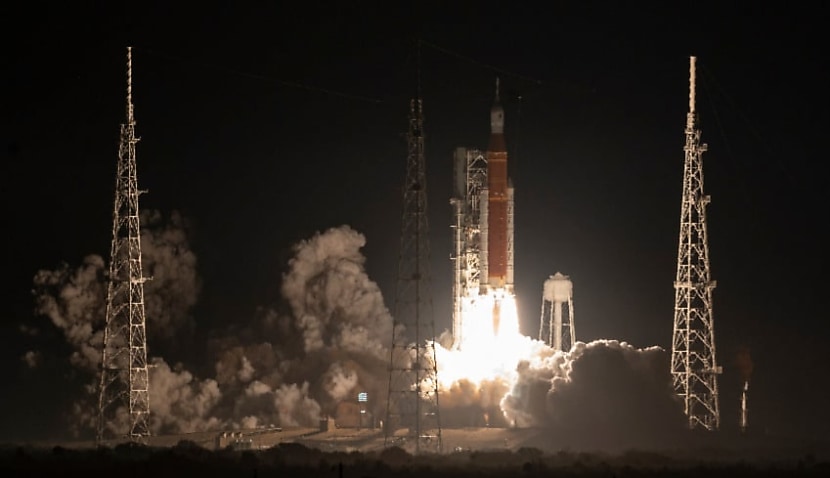
The Space Launch System (SLS) rocket blasted off at 5:47pm (AEDT) on Wednesday from Launch Pad 39B at the Kennedy Space Center, carrying the Orion spacecraft into space.
Orion will now travel just shy of 2.1 million kilometres over the next 25 days, on a journey that will take it around the moon before returning to Earth.
Artemis 1 is the first mission of the momentous Artemis program, NASA’s revived effort to take humans back to the moon.
Unlike the Apollo missions, the plan for Artemis isn’t for humans to just visit the moon and return, but rather to set up a permanent presence on the moon.
The mission that launched yesterday is an uncrewed “test flight” that is necessary to test the components of the mission in a real-world scenario. Both the SLS and the Orion spacecraft are new technologies that are being used for the first time during the Artemis mission.
Artemis 2 will be the first crewed mission and will take astronauts on a similar journey to Artemis 1. Artemis 3, however, will see astronauts returning to the lunar surface for the first time in decades. Critically, Artemis 3 will also facilitate the first woman to walk on the moon and the first person of colour.
NASA Administrator Bill Nelson spoke about the launch and the future of the Artemis program.
“What an incredible sight to see NASA’s Space Launch System rocket and Orion spacecraft launch together for the first time. This uncrewed flight test will push Orion to the limits in the rigors of deep space, helping us prepare for human exploration on the moon and, ultimately, Mars.”
An hour and a half after blasting off with the main engines of the SLS, the rocket fired its upper-stage engine for 18 minutes to push Orion out of the Earth’s orbit and towards the moon.
During the journey to the moon, 10 CubeSats onboard the spacecraft will be deployed to complete a range of different scientific observations connected to the mission.
Orion is expected to pass the moon for the first time on 21 November, before heading back to Earth.
While the most nerve-racking part of the mission is over, all hands are on deck at NASA to continuously monitor the spacecraft through the next leg of its journey.
According to Mike Sarafin, the mission manager for Artemis 1, some of the most important aspects of the mission are still to come.
“With the accomplishment of the first major milestone of the mission, Orion will now embark on the next phase to test its systems and prepare for future missions with astronauts.”

Liam McAneny
Liam McAneny is a journalist who has written and edited for his University International Relations journal. He graduated with a Bachelor of Arts (International Relations) and Bachelor of Laws from the University of Wollongong in 2021. He joined Momentum Media in 2022 and currently writes for SpaceConnect and Australian Aviation. Liam has a keen interest in geopolitics and international relations as well as astronomy.
Send Liam an email at: [email protected]
Receive the latest developments and updates on Australia’s space industry direct to your inbox. Subscribe today to Space Connect here.









